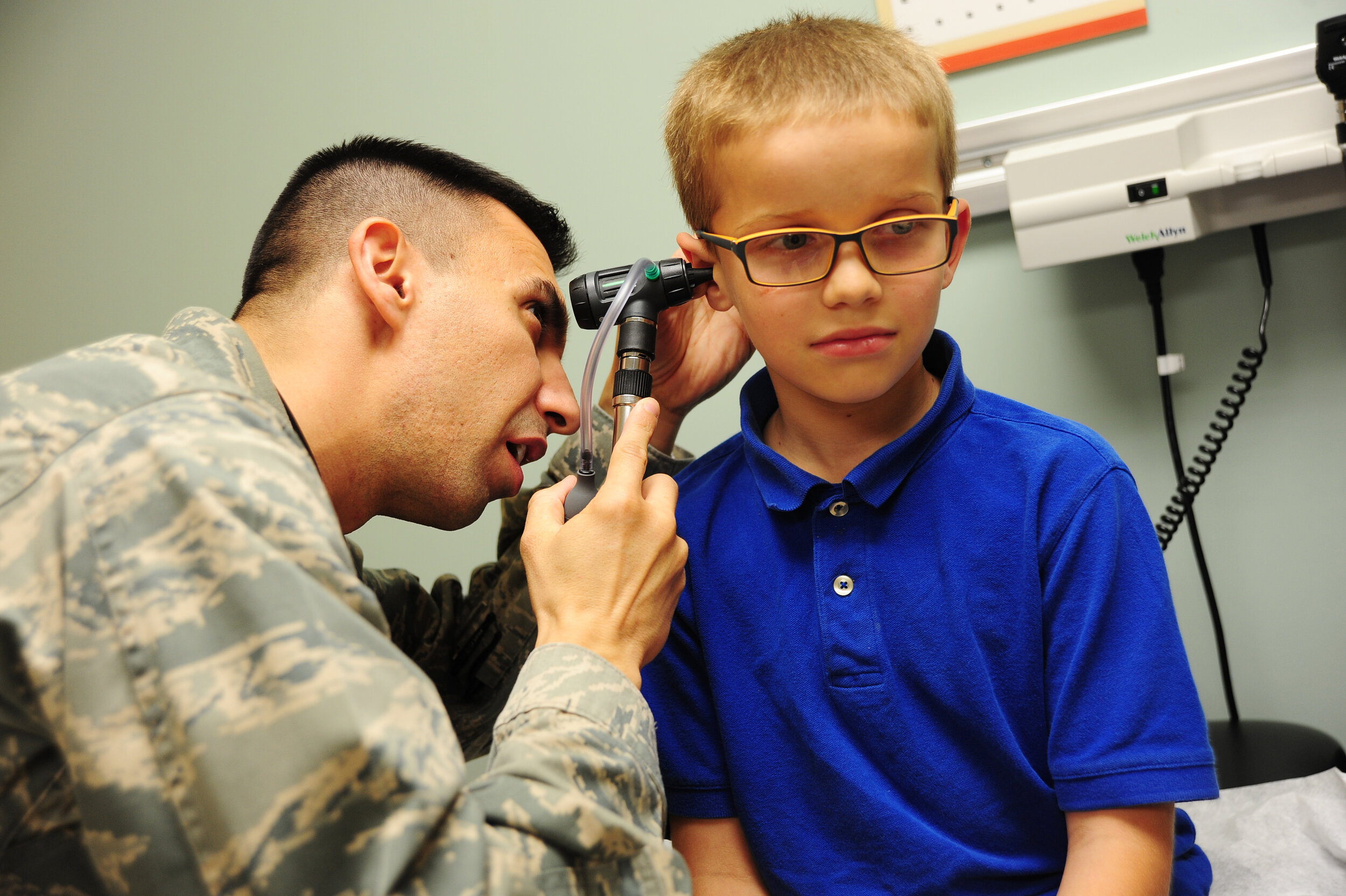Get your medical care on base? These upcoming changes may affect you.
Maj. James Tschudy, a pediatrician with the 6th Medical Operations Squadron, examines a patient during a routine check-up at MacDill Air Force Base in Florida. (Senior Airman Jenay Randolph/Air Force)
Medical care could soon look different for many military families.
Earlier this year, the military identified 48 military treatment facilities, or MTFs, that it plans to downsize or close, impacting approximately 200,000 military family members and retirees who get their care on base by directing them to civilian providers.
The changes were set to start rolling out in September, though they’ve since been pushed back "more toward the end of the year" or later because of the coronavirus, a top health official has said.
Karen Ruedisueli, director of health affairs for the Military Officers Association of America, joined The Spouse Angle podcast for an overview of these changes — and a separate plan to cut 18,000 medical billets — on episode 33, out today. She also discussed why her organization wants the military to take even longer to reevaluate these changes, especially in light of COVID-19’s impact on the health care industry.
“The Defense Health Agency has been conducting research and analysis and due diligence to make sure that the care is out there if they move patients into the civilian network. Well, right now that civilian network of care is in total flux,” said Ruedisueli, who is also the spouse of a retired soldier.
While segments of the health care system are at capacity, she said, others are under a lot of financial strain.
“We have major civilian hospital systems that are doing lay-offs. Small provider practices or independent practices are facing financial strain and it’s unclear as to how many of them will survive this,” she said. “The other side of this equation is at this point in time we don’t think DHA could really accurately assess the availability of civilian care for our military folks who would be transferred out of [military treatment facilities].”
Karen Ruedisueli
Of those 200,000 beneficiaries who would be moved to the civilian health care system, 40 percent are active-duty family members. The other 60 percent are retirees and their dependents, who would incur additional cost by going to the doctor off base, Ruedisueli said.
Military leaders have said these changes reflect the military’s underlying focus on force readiness.
“What we found in our review is that many of these facilities do not have the type of patient case load, volume, acuity that we need for our providers to be proficient in what they do downrange,” said Thomas McCaffery, the assistant secretary of Defense for health affairs, as reported by Federal News Network. “And so by limiting the scope of services, that will allow us to take some of those providers and place them at other MTFs that do have that direct match for their readiness requirements.”
Ruedisueli said it’s a point that’s hard to argue with; the main job of military providers has never been to treat military dependents.
“The fear is always that, you know, despite everyone’s best intentions … some families may be left struggling to access care,” she said. “That’s really why we are pushing so hard for rigorous analysis and reporting and making sure that there are mitigation plans in place if people do encounter problems with accessing care.”


